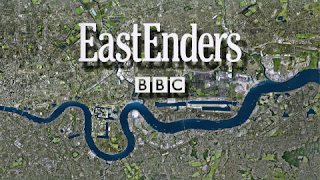Sound
Sound
You can maximise an audience's sensory experience and emotional response through combining movement and sound.
The sound can work with the visuals, such as sad music for a sad moment/scene, or can be opposite with each other, such as happy/calm music during a fight scene.
Diegetic sound is what the characters can hear within the film, such as:
- Character's voices
- Sounds of objects
- Music played within the film.
If the character can hear the sounds then it is diegetic. Diegetic sound refers to any types of sound that is heard/made from within the film's world.
This extract features diegetic sound as it is background music played in the bar. In addition to this, you hear voices and laughs of everyone else in the background as the character passes them.
Non-diegetic sound is not heard in the actor's world on screen, such as:
- A narrator's commentary
- Additional sound
- Music for dramatic effect
Non-diegetic sound is not part of the film's world, it is part of the narrative; it can be used to enhance the audience's emotions (especially from the use of music).
Here is an example of a non-diegetic sound as the main character narrates throughout the whole film, which is entirely for the audience to hear. In this extract you can see that the main character tells his thoughts to the audience.
The audience are capable of distinguishing between diegetic and non diegetic sounds as they can see the visuals right in front of them.
Parallel Music
Parallel music often matches the style of visuals shown on screen. This is an effective way of portraying the mood of the scene. Parallel music can be used to:
- convey the mood/emotions in a scene.
- indicate a sense of time and place (if the scene is set in the 1950s, then music from that particular decade will play)
- represent themes
- establish motifs.
The audience are capable of distinguishing between diegetic and non diegetic sounds as they can see the visuals right in front of them.
Parallel Music
Parallel music often matches the style of visuals shown on screen. This is an effective way of portraying the mood of the scene. Parallel music can be used to:
- convey the mood/emotions in a scene.
- indicate a sense of time and place (if the scene is set in the 1950s, then music from that particular decade will play)
- represent themes
- establish motifs.
Here is an example of parallel music. The music matches the visuals due to the main characters being separated from each other, therefore the more sad music matches the visuals and the events shown on screen at that moment. In addition to this the lyrics also portray how they feel.
Contrapuntal Music
Contrapuntal music contrasts the music and the visuals shown on screen. This can be used to:
- contradict the typical music that matches the action in the scene.
- upset the mood portrayed by the visuals.
- change the message of the scene.
Here is an example of contrapuntal music as the music does not match the visuals. In this clip, the character is shown to be torturing someone and holding them hostage. Although the visuals are fairly violent, the music played is mellow and happy which goes against what is shown on screen.



Comments
Post a Comment